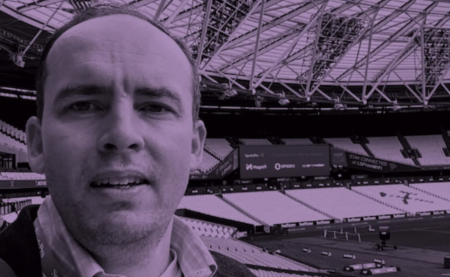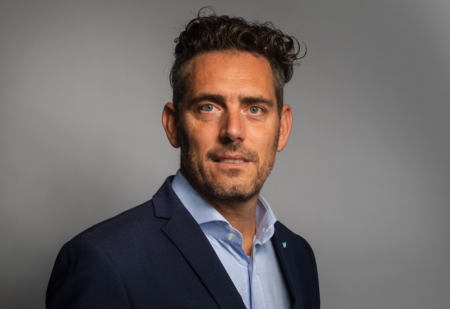Despite the predominantly negative media reports leading up to the event, the Rio Olympic and Paralympic Games were a great success and the many thousands of athletes, spectators, officials and reporters have returned home with great stories to tell.
Of course, preparations for any mega-event on the scale of the Olympics don’t happen overnight and work doesn’t stop right after the closing ceremony either. Visit the East London site of the 2012 Games today and you’ll still see a forest of cranes in action, four years after the event. Construction will continue until at least 2021. Work on the Stratford Waterfront area is due to start in 2018, where there are plans for a new V&A museum, Sadler’s Wells theater and a university campus.
Brazil has now embarked on its own transitional phase, where years of work lie ahead to complete the transformation of the Olympic site into a vibrant new district for Rio. There remain significant challenges that will affect progress and the speed of the legacy delivery, but the foundations are in place.
As masterplanners for the London and Rio Olympics, AECOM has provided strategic advice to help both host cities manage the preparation, transition and legacy phases of the Games.
The timescales and deadlines in Rio were much tighter than for London 2012, however. This demanded an integrated, agile approach to masterplanning, infrastructure design and venue design. It helped that we had integrated, multidisciplinary teams all under one roof and that we could build on our London experience, although it’s worth remembering that work on Rio started well before the opening of the London Games.
London was a logistical challenge due to the extent of work needed to transform a contaminated, brownfield site, made more difficult in the wake of the credit crunch. While the Rio site is smaller and more straightforward, the project was even more challenging from a financial perspective, given the upheaval in Brazil’s economy. We worked closely with the organizing team in Rio to reduce costs without compromising the long-term goals of the plan.
By considering the Games and legacy in parallel, we were able to minimize the need for rebuilding work. The plan for long-term usage helped to determine the location of roads and utilities, for example. Power and communications facilities installed to cater for all the reporters and TV crews covering the Games were also added with the long-term view of creating one of the best connected districts in Rio.
While hosting a successful Games is always the primary focus of an Olympic masterplan, the event also serves as a powerful catalyst for change. It presents a focused opportunity to invest in underdeveloped areas of the host city, to upgrade transport and improve other forms of infrastructure.
From the outset, the Rio Games were seen by Mayor Eduardo Paes as an opportunity to create a lasting legacy for future generations, establishing new housing, schools, transport infrastructure, sporting facilities, and open spaces. These goals were woven into the design of Rio’s main Barra Olympic Park and its sporting venues.
Influenced by the temporary structures he’d seen at the London Games, Mayor Paes coined the term ‘nomadic architecture’ to describe his desired approach, in which temporary sports arenas would be refashioned after the Games to provide new schools and other much-needed community facilities.
AECOM evolved this idea and created plans for temporary structures that could be dismantled, transported and reassembled in new configurations. Four out of the nine venues built at the Barra park were designed in this fashion.
The Handball Arena, for example, will be rebuilt as four new primary schools in different locations across the city. The Olympic Aquatics Stadium will be reassembled as two separate community swimming centers.
To facilitate this approach, we developed the concept for an efficient, highly standardized structural design based on modular, stacked and repeated bolted steel units. This design eases both dismantling and reassembly. The building concept was further developed and delivered by AndArchitects.
Even the permanent venues were built with their legacy use in mind, to ease their transformation after the Games. One such building will become a new high school for elite young athletes.
A key issue to note is that the Olympic Park has been delivered as a fixed-term Public Private Partnership (PPP) by the Rio Mais consortium, made up of the construction companies Carvalho Hosken, Odebrecht and Andrade Gutierrez. This commercial structure will make sure the legacy remains a priority as the return on the investment is directly tied to the value that can be created on the site.
The 2016 Games were exciting for all who took part or watched the action on TV, and were amplified by the atmosphere and beauty of Rio. It will be equally uplifting to see the transformation of the Olympic Park over the next few years. Now that the site no longer has to cater for huge volumes of spectators, it will be transformed into a lush, green oasis as part of AECOM’s landscape design strategy, proving a new park for the community stocked with a wide variety of native plant species.
Our overriding goal has been to deliver a sustainable Games in the very broadest sense, so that Rio derives economic, social and environment benefits that stretch far into the future. The current political and economic challenges will stretch out the timetable for completing the transition to full legacy use, but it will be worth it. Rio’s full Olympic experience has only just begun.
Photo ©2016 Robb Williamson
October 6, 2016




